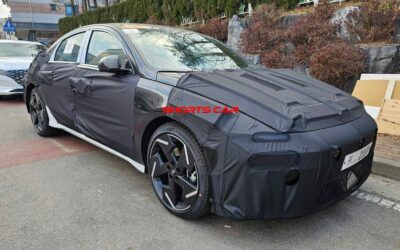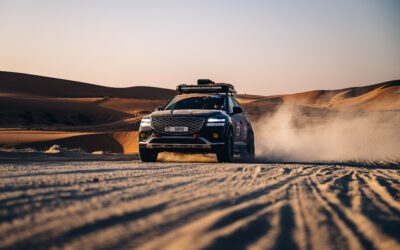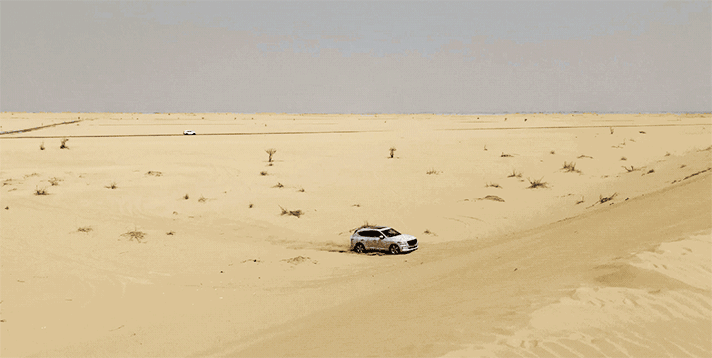
The appeals of the GV80, the first SUV of the Genesis line, are quite diverse―elegant exterior and interior design, powerful drivetrain, comfortable ergonomic seats, and cutting-edge ADAS and convenience features are some that come to mind. But one relatively unheralded appeal of the GV80 is worth further exploration: its off-road performance. Though its sleek, urbane design makes the association hard, the GV80’s 4WD system and terrain mode actually fit the bill of a quintessential off-road SUV.
[ads id=”9″]
Amid many, there is one prominent feature enhances the GV80’s offroad performance: Electronic-Limited Slip Differentials, otherwise known as e-LSDs. Given that there have not been many domestic vehicles released with the feature, the name will strike many as unfamiliar. Indeed, the GV80 is the first domestic SUV that comes with an e-LSD.
The rationale behind the application of an e-LSD on the GV80 is simple―its presence makes off-road driving significantly easier. In this article, we explore the mechanism by which the GV80’s e-LSD functions.
The Limits of Differential Gears and the Need for Limited Slip Differentials
Before we delve into e-LSDs, let us first establish why LSDs are necessary in the first place. Normally, the power put out by the engine is conveyed to the wheels via the transmission and drive axles. While the car is on a straight paved road, the rotation speeds of all wheels are equal; however, if there are obstacles on the way that disproportionately impact the wheels on either side―say, a water pool, sand, dirt, or potholes―the rotation speeds of the wheels will have to go out of sync to maintain directional stability.
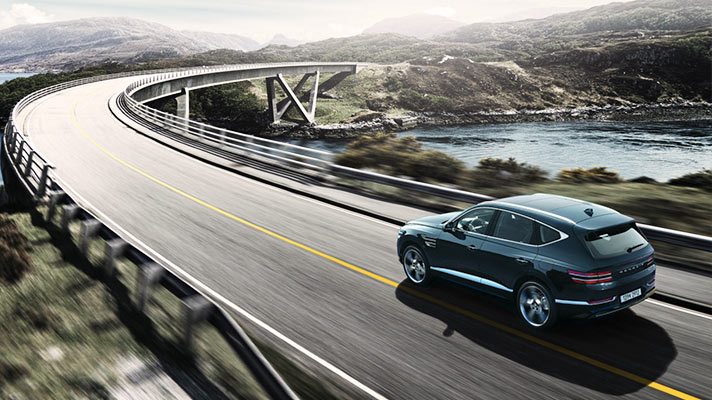
[ads id=”8″]
The same applies while the car turns a corner. While cornering, the car’s outer wheels travel a greater distance than that traveled by the inner wheels―meaning, the former has to rotate faster than the latter. The need for this ‘difference’ is resolved by the parts called differential gears, which are capable of ‘differentiating’ the amounts of power conveyed to the left and the right wheels. Differential gears are essential for normal driving that we take for granted. If they are gone, all wheels will rotate at the same RPM even as they turn a corner, which will then build up the resistance on the outer wheels (which have to turn more), which will then ultimately result in a failed cornering attempt.
But differential gears have their limits too―particularly on rough roads with dirt or sand where a good grip is hard to get. Because they determine the power differential on the basis of the wheels’ RPM difference, differential gears usually end up sending more power to the wheels on the side without good traction. In the worst case, the wheels on this side may end up running without any grip, essentially mid-air. Meanwhile, the wheels on the other side do not receive enough power, sinking the vehicle further into the terrain in which the wheels are stuck.
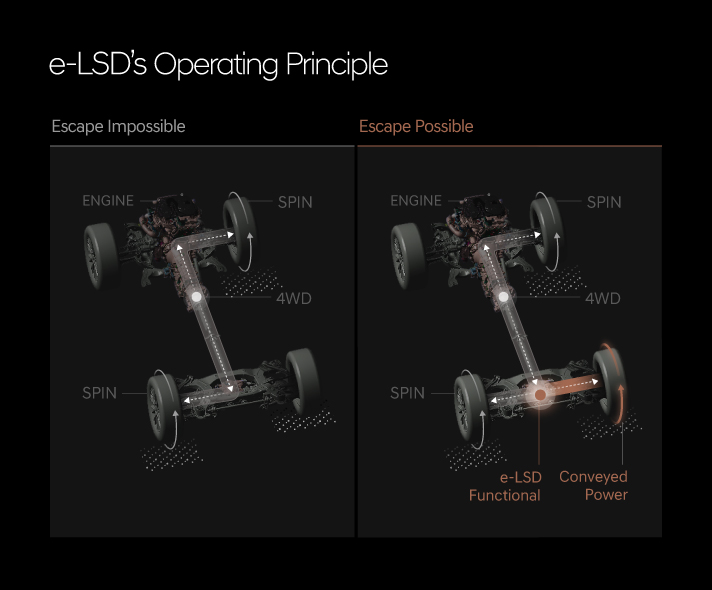
This is where LSDs come in. As the name suggests, LSDs limit the power differential when they notice that the wheels on either side are slipping or not getting enough traction. In doing so, LSDs eliminate the possible imbalance of power (discussed in the above scenario), intervening in situations that differential gears alone cannot handle.
LSDs are useful not only in off-road driving but also in cornering. The centrifugal force from cornering leads the car to veer outside, leading the inner wheels to experience reduced weight and thus reduced traction; differential gears fail to deliver the right balance of power to maintain directional stability. In comes the LSD, which sends the appropriate level of power to the inner wheels to prevent slippage, and delivers the necessary power to the outer wheels as well. As shown, by instantly recognizing the amount of power needed on either side as the car moves forward, LSDs can help prevent both understeers (where the car does not turn enough and leaves the road) and oversteers (where the car turns more sharply than intended and gets into a spin).
Differences between Mechanical and Electronic LSDs
LSDs can be divided into mechanical (M-LSD) and electronic (e-LSD), and the GV80 comes with the electronic version. An M-LSD utilizes a mechanically controlled multi-plate clutch to control the power transfer to the wheels. While it performs this job well, unfortunately, it activates only when the RPM differential between the wheels reaches a certain threshold; put easily, an M-LSD will start only when wheels on one side begin to slip. M-LSDs are limited in one more sense: the degree by which it can limit the power transfer is mechanically set and cannot be transcended.
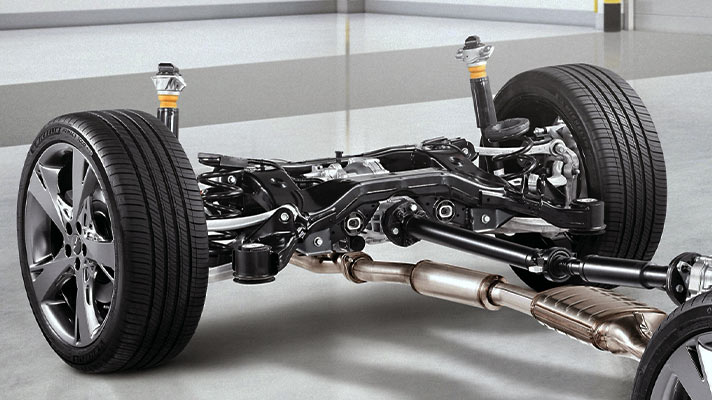
[ads id=”8″]
e-LSDs, on the other hand, utilize electronically controlled clutches and therefore can be more active and flexible in controlling the power balance. When the sensors on the GV80 detect the incoming uneven terrain, the e-LSD is activated by the system in expectation. Such a swift, smooth, and precise response to terrain changes makes e-LSDs superior to M-LSDs. Particularly, the e-LSD applied to GV80’s rear axle boasts a top-notch response time, even according to global standards. It uses a hydraulic actuator to instantly recognize (within 0.1 seconds) the smallest changes in the pressure level caused by road surface changes and then reacts by adjusting the balance of power transferred to the wheels.
Here is the simpler scenario for the layman: if the wheels on one side of a GV80 sink into a rough road and gets stuck, the system will instantly recognize this fact and activate the e-LSD to adjust the balance of power. Before the driver knows it, the car becomes unstuck.
GV80’s 4WD System and Terrain Mode
As mentioned, the GV80 is equipped with the 4WD system and the Terrain Mode. The 4WD system assesses the various driving conditions (including on-road/off-road status) to improve the balance of power transferred to the front and the rear set of wheels. Coupled with the e-LSD―which adjusts the subtle balance between the right set and the left set―on the rear axle, the 4WD system assures that the wheels will not lose traction under any driving condition.
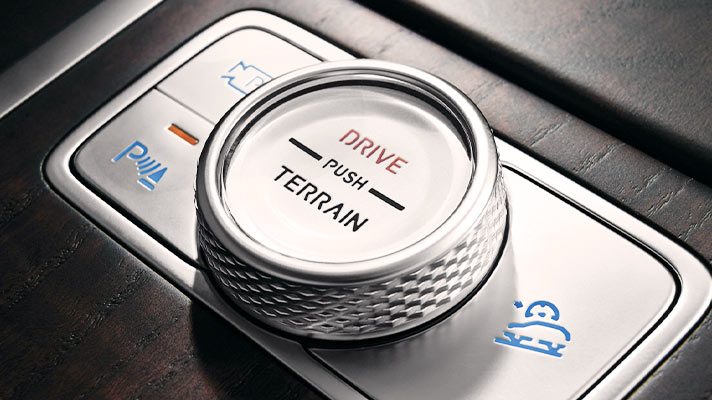
The 4WD system works more effectively, however, under GV80’s Terrain Mode. The Terrain Mode is an integration of the 4WD system, the e-LSD, the ECU (Engine Control Unit), the TCU (Transmission Control Unit), and the TCS (Traction Control System); it controls these various systems comprehensively to improve GV80’s off-road performance. It also offers three choices of terrain―mud, sand, and snow―maximizing the maneuverability specific to the road condition.
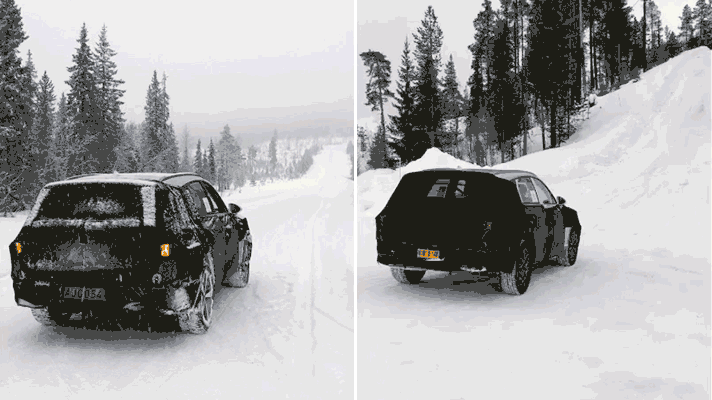
Each terrain mode manages the drivetrain more subtly than it would under the standard paved conditions. For example, on slippery snowy roads, the engine, transmission, and 4WD system are simultaneously controlled not to deliver too much power to the wheels, preventing slippage.
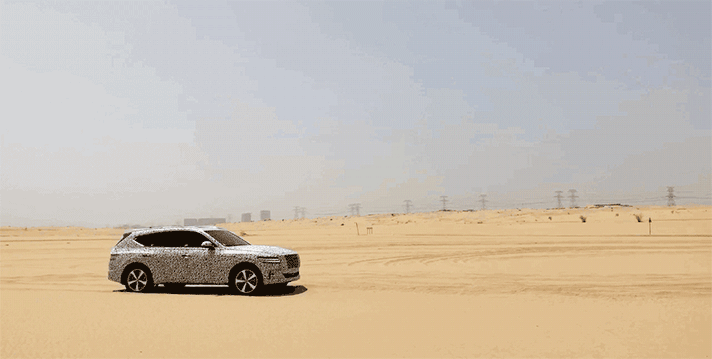
[ads id=”8″]
The Mud Mode is designed to boost the engine and instantly convey great power to the wheels, such that the wheels can escape from thick mud. The Sand Mode takes account of the resistance-heavy nature of sand and urges the powertrain to be as smooth as possible in transferring power to the wheels. In addition, it maintains the 50:50 power balance between the front and the rear wheels to ensure that the wheels do not sink into the sand.
As shown, the Terrain Mode subtly controls the drivetrain to help the vehicle escape the dangers of harsh terrain. But if one of the rear wheels on a 2WD vehicle is completely stuck, getting the car unstuck might not be possible even if the Terrain Mode were to be applied there. Likewise, for the ordinary SUVs only equipped with differential gears, the Terrain Mode alone may be moot, since, as discussed, most of the engine power will be sent to the side without traction.
e-LSD Completes GV80’s Off-road Performance
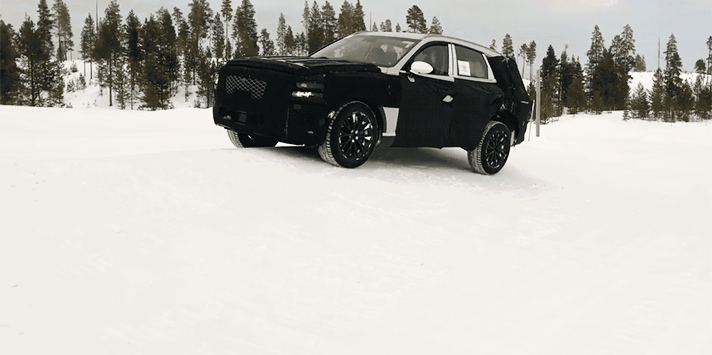

But once the 4WD system, the Terrain Mode, and the e-LSD are combined as in the GV80, the story changes. Even when one side of the wheels slip or run idle, the e-LSD will ensure that the driving power will not be transferred there in excess; at the same time, it will also send an appropriate amount of force to the other side. Meanwhile, the control of the power balance on the front wheels is the responsibility of the TCS. The power balance of the rear wheels is managed by the e-LSD, whereas that of the front wheels is managed by the TCS―it is this intricate arrangement of wheel power transfer that allows the 4WD system and the Terrain Mode to truly blossom. And as the crux of this multi-faceted collaboration of many systems, the e-LSD arguably deserves most credit in letting the versatile GV80 run smoothly and safely through the harshest of terrains.
The GV80 features many cutting-edge technologies like the e-LSD that may not be visible on the hood but nonetheless influence driving performance greatly. They are the unsung heroes in producing the performance commensurate with the model’s title of a premium luxury SUV. If you drive one, you will soon feel it: that even though the outward appeal of the GV80 is undoubtedly great, there is also far more than what meets the eye.


